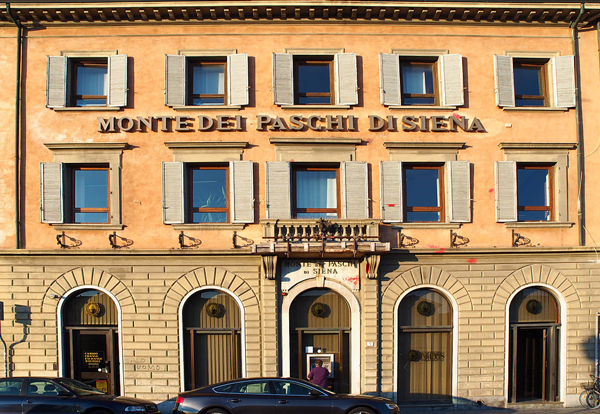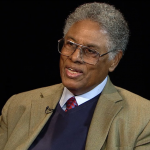By Samuel Gregg
 Given that he was a member of the famously ascetic Franciscan order with his own reputation for detachment from worldly things, Bernardine of Siena (1380–1444) was remarkably insightful about money. Most people are understandably surprised to learn that some of the important intellectual developments that first enabled finance to become an engine of growth were made by men who had, for the most part, freely taken vows of poverty. Almost a century before Bernardine, another Franciscan, Peter Olivi (1248–1298), had written the following in his De contractibus usurariis:
Given that he was a member of the famously ascetic Franciscan order with his own reputation for detachment from worldly things, Bernardine of Siena (1380–1444) was remarkably insightful about money. Most people are understandably surprised to learn that some of the important intellectual developments that first enabled finance to become an engine of growth were made by men who had, for the most part, freely taken vows of poverty. Almost a century before Bernardine, another Franciscan, Peter Olivi (1248–1298), had written the following in his De contractibus usurariis:
For since money or property which is directly managed by its owner is put to work for a certain probable gain, it not only has the simple quality of money or goods, but, even beyond that, a certain seminal quality of generating profit, which we commonly call capital … and therefore not only does the simple value of the object have to be returned, but also an added value.
Like all medieval clergy, Olivi and Bernardine fiercely opposed usury. “Usury,” Bernardine wrote, “concentrates the money of the community in the hands of a few, just as if all the blood in a man’s body ran to his heart and left his other organs depleted.” Yet the same Bernardine also invested time in explaining why it was legitimate for creditors to charge interest on loans to compensate themselves for relinquishing the opportunity to invest their money elsewhere. In such circumstances, the lender had a right to be compensated for what amounted to foregone profits. “What,” Bernardine maintained, “in the firm purpose of its owner is ordained to some probable profit has not only the character of mere money or a mere thing, but also beyond this, a certain seminal character of something profitable, which we commonly call capital.”
This title, known as lucrum cessans (profits given up, or what we today might call the opportunity cost of liquid funds) reflected the insight that money was not always sterile and could become productive: money could turn into capital. Franciscans didn’t limit themselves to writing about such issues. From the fourteenth century onward, they sought to help the needy gain access to credit in the form of loan companies. More popularly known as montes pietatis, the first of these lending institutions was established by Franciscans and initially funded by donations from wealthy Christians. They lent money to relatively poor people unable to access loans from established moneylenders. Borrowers would provide the montes with small items of value as a form of security for the loan’s repayment.
Controversy arose, however, when the montes began charging interest, ranging between 4 and 12 percent. One of their strongest boosters – another Franciscan who spent much of his time decrying moneylending in general and (alas) Jewish moneylenders in particular, Blessed Bernardine of Feltre (1439–1494) – insisted that some charging of interest by such institutions was essential if they were to become self-sustaining. Eventually this became the norm for all Franciscan-established montes. Not surprisingly, they were eventually accused of engaging in usury.
The montes and their practices of charging interest were, however, vindicated, first by Pope Paul II in 1467 when he approved the original mons in Perugia, and then by Pope Leo X in 1515 in the papal bull Inter multiplicis. Hundreds of montessubsequently emerged throughout Italy, France, Austria, Germany, Flanders, and Spain. One of the earliest, the Monte dei Paschi di Siena, was founded in 1472. It still exists today and is Italy’s third largest bank, employing thousands of people around the world.
Despite papal approval, accusations of usury against the montes didn’t disappear. This produced defenses of their charging of interest by scholastic thinkers, such as the sixteenth-century Dominican Martin de Azpilcueta (1491–1586). He argued that the interest was, strictly speaking, not a direct payment for the loan but a charge for administering the loan.
Many people today look at the way in which Christian thinkers reacted to these developments throughout the medieval and early modern period with some cynicism. More than one person has suggested it amounted to Christians engaging in torturous semantics to help Christianity accommodate itself to widespread economic changes as the world’s first forms of capitalism began taking root in medieval Europe.
To reduce such intellectual development to a crass adjustment to circumstances would be a mistake. Certainly context is important. But it’s also true that an environment of immense economic change stimulated many Christian scholars from the eleventh century onward to rethink the nature of money. Over time, they developed a series of important insights and clarifications, the most significant being a clear distinction between usury and legitimate forms of moneylending.
These writers did not approach these issues as “economists.” They addressed these questions in the context of moral theology and law. The sophistication of their analyses was such, however, that as noted a modern economist and historian of economics as Joseph Schumpeter (who famously coined the phrase “creative destruction”) could affirm that “we behold an embryonic Wealth of Nations” in scholastic thought.
Samuel Gregg is research director at the Acton Institute. This commentary is excerpted from his new book, For God and Profit: How Banking and Finance Can Serve the Common Good (Crossroad Publishing Co., 2016).
Originally published at Acton Commentary
Image credit: Wikipedia












